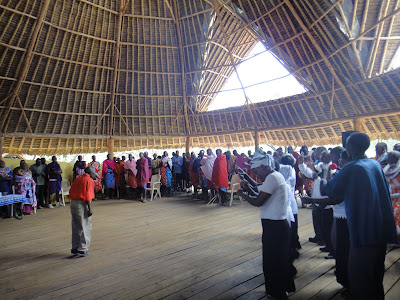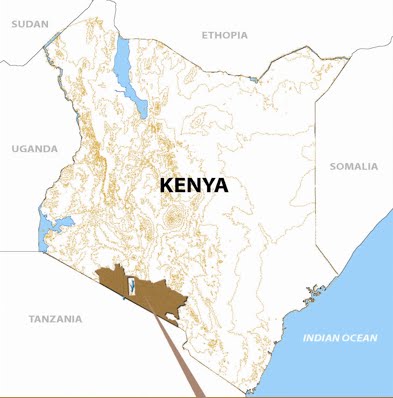An historic meeting at Kwenia- Olorgesailie that aims to conserve this unique ecosystem and benefit Maasai communities - BY MUNIR VIRANI

Every journey begins with a small step. Over the last nine years my colleague Simon Thomsett and I have been monitoring populations of Ruppells vultures at the Kwenia cliffs in Kajiado district, about a three and half hour drive south of Nairobi. This colony is the largest breeding colony of species in southern Kenya and should be considered a national asset. Unfortunately, Kwenia has no conservation status whatsoever. The surrounding areas of Olorgesailie, Kilonito and oldonyo Nyokie also have no conservation status. These regions are harsh, arid and water deficient. In contrast and by virtue of being in the southern rift valley the region also contains some of the most diverse species of vertebrates on earth. Notwithstanding the importance of this very important vulture colony, other species such as lesser kudu, gerenuk, wild dogs, cheetah, hyena and myriad of raptor and other prolific birds abound. Olorgesailie is also an important prehistoric site, recognized globally as one of the places where early hominids used hand axes. Hominids fossils go back nearly nine hundred thousand years based on work conducted by Dr Rick Potts and his colleagues from the Smithsonian institution. The species of animals unearthed at Olorgesailie and other locations in southern Kenya changed over time as environmental conditions shifted time and again. Species of baboons, elephant, zebra, pigs and hippopotamuses that had been very abundant in the region went extinct. They were replaced by closely related species that still survive in east Africa today.
On 26th January, 2011, I had the pleasure of attending an historic meeting held at the Olorgesailie prehistoric site near Ol-Tepesi followed by a site visit at the base of the Kwenia vulture breeding cliffs. The meeting was organized by john Kamanga of SORALO (south rift association of land owners) and facilitated by Dr David Western and his colleagues of the African conservation centre and attended by local Maasai elders, chairmen of local wildlife and conservation groups and local land owners. Also present was Titus Kaai, a young educated Maasai gentleman with back ground in chemistry and an ambassador of the vultures of Kwenia. I have known Titus since he was a young boy and today meeting was huge step towards achieving his dream of getting the area conserved. Titus and his family live at the base of the cliffs and for the last five years, they have watched helplessly as truck loads of vehicles blaze towards the seasonal lake at the base of the vulture cliffs and ferry piles of cut trees, logs and deadwood to sell to a rapidly growing human population in Nairobi’s suburb. “The land is fast getting degraded” he told me sometimes last year when Kenya experienced one of its worst droughts and his family lost a lot of livestock. “Soon even the vultures will go” he said despondently. “Don’t give up Titus,” I would tell him. And today’s meeting gave him that opportunity to express his feelings.
The mood at the meeting was cordial and everybody I spoke to expressed delight and jubilation at the fact that there were steps being taken to develop a conservation easement area that will pave the way for future conservation efforts and community based eco-tourism prospects a step that will certainly benefit the local community. Titus especially was all smiles.

It was a hot day and for me the highlight was meeting with Dr Rick Potts of the Smithsonian institution and listening to his impassionate talk about the fossil record and evolution of the area. Dr Rick Potts and his colleagues have been conducting research in this area for the last 26 years. The road to the site was dusty and we left in a colony of three vehicles. As we drove across the dry lakebed, I felt a sense of relief that there was now a consortium of individuals and organizations that really believed in this cause. The Kwenia area is truly one of the most scenic landscapes in Africa. We approached our campsite and everyone looked at the impressive over-empowering cliffs. I pointed out to the Ruppells vultures circling above us, an Egyptian vulture also flew above us while a pair of lanner falcons gave us an exceptional show in speed, agility and grace. My friend Gordon brown from Zimbabwe accompanied me to Kwenia and was given the task of taking photos. He was also in complete awe of the area.

John Kamanga led the meeting and explained to the Maasai elders what the next steps would be. There will be numerous challenges since some of the area is trust land whilst other parts are privately owned. We all agreed that we would first need to expose the local Maasai elders to areas where successful conservancies and eco-tourism ventures were ongoing. This would include places such as Shompole and Olkiramatian. Understanding the benefits accrued from conservation practices via ecotourism would help motivate the Maasai elders to engage in similar practices back at Kwenia and Olorgesailie. Secondly, it was critical that we help develop local capacity especially game scouts and rangers who would then be based at each of the entrances to Kwenia and other ranches to curb the horrendous felling and destruction of the trees. And finally, we agreed that we should hold another stakeholders meeting where all the Maasai land owners living in the proposed conservation easement area give a firm commitment towards achieving conservation of the area. This would be the most challenging task. My role via the peregrine fund would be to help develop local capacity and continue to provide the scientific knowledge, with respect to the avifauna (particularly raptors) that would help towards the development of a conservation and management plan, critical in ensuring that Kwenia and the greater Olorgesailie region be conserved and safeguarded for future generations. While we may have made history in this first meeting, the challenges are enormous and the path long, but with the backing of credible organizations that are determined to see Kwenia conserved, we shall certainly overcome.


Posted By Rahab Wandia























